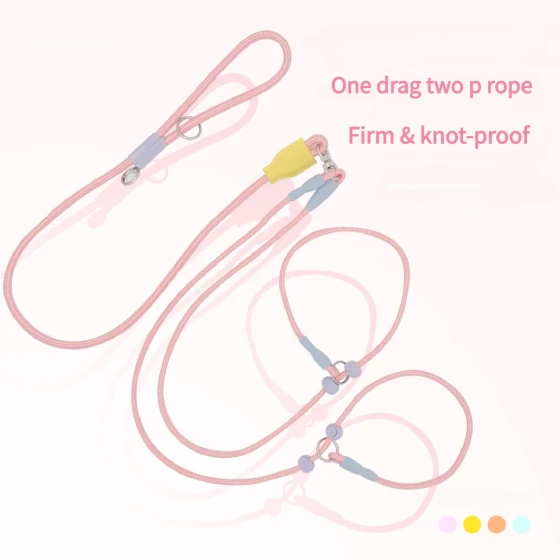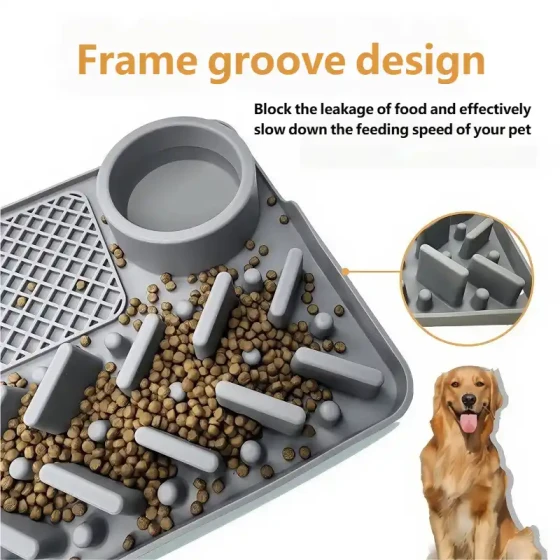Analysis and Comparison of Medication for Canine and Feline Liver Diseases
1. Denosyl (DENOSYL)
Ingredient: S-Adenosylmethionine (SAMA)
Nutramax, USA
Dosage: 20mg/kg/d
1. Mechanism
1.1 Transmethylation: Participates in phospholipid synthesis, which is very important for cell membrane structure, fluidity, and function.
1.2 Transsulfuration: It is a precursor to glutathione, synthesizing glutathione, a powerful antioxidant involved in many metabolic processes and liver detoxification. It is an important liver detoxifier that helps maintain liver cell function. When the liver is damaged, endogenous glutathione production decreases, affecting liver function.
1.3 Transamination: The aminopropyl group aids in the production of anti-inflammatory substances, protein and DNA synthesis, cell replication, and is crucial for liver tissue renewal.
1.4 SAMe has anti-inflammatory, pain-relieving, and tissue repair functions. It shows significant effects in treating arthritis by promoting cartilage formation and reducing joint pain, stiffness, and swelling. Europe has approved SAMe as a prescription drug for arthritis treatment.
2. Usage
This product is an enteric-coated film tablet that must be swallowed whole on an empty stomach, one tablet twice daily, administered either one hour before or four hours after eating. Absolutely do not crush, break, chew, or dissolve.
To prevent refusal to take medication, it can be wrapped in a small amount of soft food; if given with food, double the dosage should be administered. The number of tablets can be gradually increased or decreased depending on the pet’s needs. Many pets require long-term maintenance dosing of Denosyl (DenosylTM), at one-third of the normal dose.
It is currently the first-choice drug in the United States for treating various canine and feline liver diseases. Its main functions are repairing damaged liver cells, eliminating ascites, normalizing bile function, reducing jaundice, and promoting active eating in dogs and cats. It produces significant effects in a short time.
2. Denamarin Hepatoprotective Forte 90mg and Forte 225mg Chewable Tablets
Ingredients: S-Adenosylmethionine, silymarin
Nutramax, USA
1. Mechanism
1.1 Hepatoprotective effect: Powerful antioxidant function protecting liver cells from free radical damage by scavenging free radicals, with efficacy much greater than vitamin E, enhancing liver detox capacity.
1.2 Prevents cirrhosis and hepatitis, promotes bile flow, and enhances digestion and intestinal nutrient absorption.
1.3 Promotes protein synthesis, accelerates new liver cell production, or facilitates repair of damaged liver cells, increasing glutathione levels. Hence called a "natural liver protector."
1.4 Antitumor effect: Various reactive oxygen species can oxidize guanine to form 8-oxoguanine, causing DNA damage and tumors. Use of antioxidants, especially free radical scavengers, can prevent this process.
2. Usage
2.1 Administer on an empty stomach (at least 1 hour before or 4 hours after a meal).
2.2 Hepatoprotective Forte 90mg: Sugar-coated tablet to protect from stomach acid damage. Do not crush as it affects intestinal absorption. If difficult to administer, wrap in a small amount of food but try to avoid or appropriately increase dosage.
2.3 Hepatoprotective Forte 225mg chewable tablets: Can be split; microencapsulation technology makes it less prone to oxidation. Not recommended to mix in water or syrup.
2.4 Added silymarin may cause gastrointestinal reactions (vomiting or diarrhea).
3. Zentonil
Ingredients: S-Adenosylmethionine, lecithin
Vetoquinol, France
1. Mechanism
Lecithin is known as the “third nutrient” alongside proteins and vitamins. It nourishes the myocardium and regulates serum lipid levels, meaning it can lower cholesterol levels and protect the liver.
2. Usage
Since its main ingredient is also S-Adenosylmethionine, it must be taken on an empty stomach. However, it uses microencapsulation technology to prevent biochemical reactions, is enteric-coated, more palatable, and can be split, crushed, or chewed.
4. Hepaphirst
1. Ingredients and Effects

Analysis and Comparison of Medication for Canine and Feline Liver Diseases
2. Usage
Recommended dose: One tablet per 5 kg of body weight during maintenance, adjustable to 2-3 times the dose based on condition.
Suitable for: elevated liver enzymes, acute or chronic hepatitis, poisoning, fatty liver, and long-term liver care during chronic treatment.
Note: Conventional SAMe-based liver protectants contain little or no silymarin (therapeutic silymarin dose for liver disease is 20-50 mg/kg/d). Hepaphirst provides vitamin B complex (necessary for SAMe conversion to glutathione) and higher silymarin doses. Hepaphirst combined with Denosyl, Hepatoprotective Forte or Zentonil achieves better effects.
5. LiverHeart
Ingredients: taurine, L-carnitine, vitamin E, coenzyme Q10, essential fatty acids (DHA and EPA)
Korea
1. Mechanism
1.1 Taurine: An essential amino acid for cats. Taurine binds with bile acids to form taurocholic acid, essential for fat absorption in the digestive tract, resolving bile obstruction, increasing bile flow, maintaining muscle contraction, neutralizing free radicals, and antioxidant effects. It improves myocardial contraction, delays heart failure, and maintains normal retinal function.
1.2 L-carnitine: Maintains normal nutrition and fat metabolism. Essential for heart, liver, and nerves. It enhances myocardial energy, improves heart contraction, and maintains cardiac function. Strengthens lipid metabolism and helps treat fatty liver.
1.3 Vitamin E: Antioxidant that inhibits free radical-induced myocardial damage and delays heart failure.
1.4 Coenzyme Q10: Improves myocardial function, lowers cholesterol, and reduces blood pressure.
2. Treatment
2.1 Cardiac: Improves cardiac contractility, treats dilated cardiomyopathy, ameliorates heart failure, protects vessels, and prevents thrombosis.
2.2 Liver: Mainly targets fatty liver and biliary stasis, promotes bile secretion, thus improving liver function. Less effective for other liver diseases.
2.3 Others: Lowers cholesterol, boosts immunity, and strengthens muscles.
3. Dosage & Administration: Under 10kg: twice daily, 1 tablet each time. Over 10kg: twice daily, 2 tablets each time. Combined with essential fatty acids for better effect.
6. Gantaile Glucuronolactone
1. Mechanism
Pharmacology: After entering the body, this medication binds to toxins containing hydroxyl or carboxyl groups, forming low-toxicity or non-toxic conjugates excreted via urine, protecting the liver and detoxifying. Glucuronolactone increases liver glycogen and reduces fat storage.
After administration, the lactone ring is enzymatically opened to glucuronic acid, one of the body’s key detox substances. Additionally, under glucuronosyltransferase, it conjugates phenol, hydroxyl, carboxyl, and amino-containing metabolites, toxins, or drugs in liver or intestines, forming non-toxic glucuronic acid conjugates excreted through urine. However, cats relatively lack glucuronosyltransferase.
2. Note:
It is basically ineffective for cats and may increase metabolic burden on the liver.
It can be used in dogs for adjunctive liver protection and detoxification in acute or chronic hepatitis, toxic hepatitis due to food or drugs.
3. Dosage: Dogs 50-200mg per dose orally, 2-3 times daily.
100-200mg per dose by IM or IV injection, once daily.
7. Hepatoprotective Capsules
1. Ingredients: Bupleurum, Cyperus, Turmeric, Angelica, Atractylodes, Schisandra, Astragalus, White Peony, Poria, Artemisia, Isatis root, Licorice, etc.
2. Effects: Soothe liver qi, clear heat and disperse masses, soften liver and strengthen spleen, regulate qi and blood, lower transaminases; used in acute and chronic hepatitis and early liver cirrhosis.
3. Dosage: 1 capsule per 10kg body weight, twice daily, one month per course.
8. Liver & Kidney Support
1. Ingredients: Ligusticum chuanxiong, Astragalus, and other natural plant extracts.
2. Effects: Clears heat and detoxifies, protects liver and kidneys, enhances immunity, reduces swelling and disperses masses, promotes diuresis and removes dampness, warms intestines and restrains lungs.
3. Dosage: Oral or drinking, 1ml/kg, once daily, for 3-5 days consecutively.
Summary of Oral Medications

Analysis and Comparison of Medication for Canine and Feline Liver Diseases
9. Liver Peptides
This product is a purified small molecular polypeptide active substance extracted from fresh piglet liver, with the following bioeffects:
1. Effectively stimulates DNA synthesis of new liver cells, promotes recovery of damaged liver cell mitochondria and rough endoplasmic reticulum, accelerates liver cell regeneration, repairs liver tissue, and restores liver function.
2. Improves phagocytic function of dormant liver cells, prevents further damage from intestinal toxins, inhibits tumor necrosis factor (TNF) activity, thus promoting repair after liver necrosis. Also lowers transaminases, serum bilirubin, and shortens prothrombin time.
Dosage: Dogs and cats 2-3 mg/kg IM or IV.
10. 3AA
Ingredients: Leucine, Isoleucine, Valine.
These three amino acids are branched-chain amino acids with branched side chains metabolized mainly in skeletal muscle.
1. Mechanism:
(1) Valine, leucine, and isoleucine enter the body to correct imbalances of branched-chain amino acids and aromatic amino acids in plasma, preventing hepatic encephalopathy caused by elevated brain aromatic amino acid levels.
(2) Promote protein synthesis and reduce protein breakdown, beneficial for liver cell regeneration and repair, and improving hypoproteinemia.
(3) Metabolized directly in muscle, fat, heart, and brain, producing energy for the body and reducing liver burden.
2. Indications: Used for hepatic encephalopathy from various causes, severe hepatitis, cirrhosis, and chronic active hepatitis. Effective in perioperative care in hepatobiliary surgery.
Dosage: Dogs and cats 10 ml/kg/d.
11. Yin Zhi Huang
1. Ingredients: Artemisia capillaris, Gardenia, Astragalus, Honeysuckle extract.
Artemisia capillaris: Promotes bile secretion and excretion of bile acids and bilirubin.
Gardenia: Choleretic effect, increases bile secretion, and inhibits elevation of blood bilirubin.
Baicalin: Used for damp-heat jaundice; has broad-spectrum antibacterial effects.
Honeysuckle: Has broad-spectrum antibacterial and anti-influenza virus effects.
2. Has heat clearing, detoxifying, and dampness-removing effects; reduces jaundice and lowers ALT.
Applicable to: Dogs and cats; used in acute, persistent, chronic hepatitis and severe hepatitis; also for comprehensive treatment of other severe hepatitis types.
3. Usage: Diluted with 10% glucose injection 250-500 ml for drip infusion.
Section 2: Liver Disease Prescription Diets
1. Royal Canin Liver Prescription Diet
Reducing copper content and increasing zinc minimizes copper accumulation in liver cells and intracellular damage caused by cholestasis.
· Restricting sodium intake reduces portal hypertension and extracellular fluid accumulation.
· Synergistic antioxidant complex slows hepatocyte degeneration.
· High-energy and highly digestible plant proteins reduce liver workload, limiting occurrence or worsening of liver disease.

Analysis and Comparison of Medication for Canine and Feline Liver Diseases
2. Hill’s (L/D)
Appropriate amount of digestible high-quality protein helps reduce liver function burden and maintain liver function.
Added L-carnitine assists in maintaining normal liver fat metabolism.
Added antioxidants (such as vitamins E and C) help control oxidative status of cells and maintain a healthy immune system.
Low sodium helps maintain normal blood pressure levels.
Suitable for hepatitis, cholestatic liver disease, hepatic encephalopathy, and fatty liver cases.
Contraindications: Hyperlipidemia, pregnancy.
Source: Dr. Wang Lili, Ornamental Animal Hospital

-560x560.webp)



